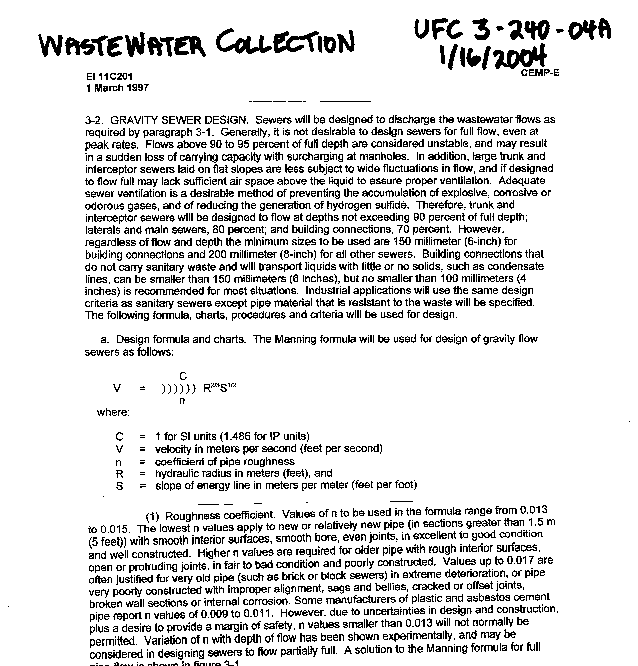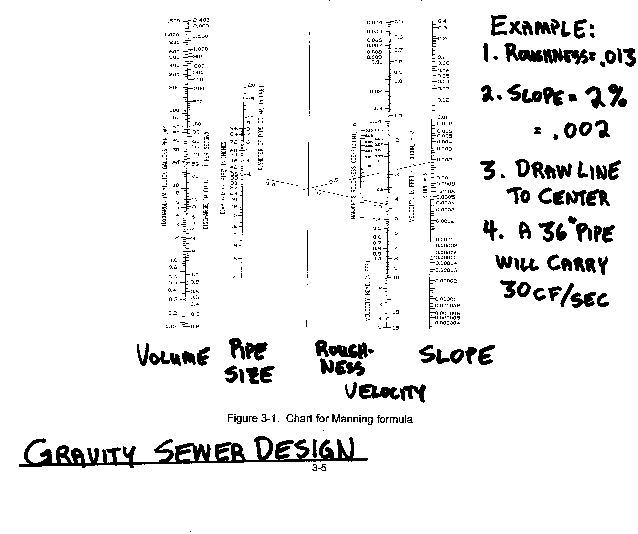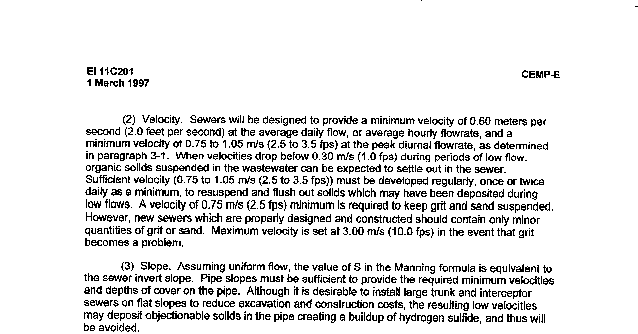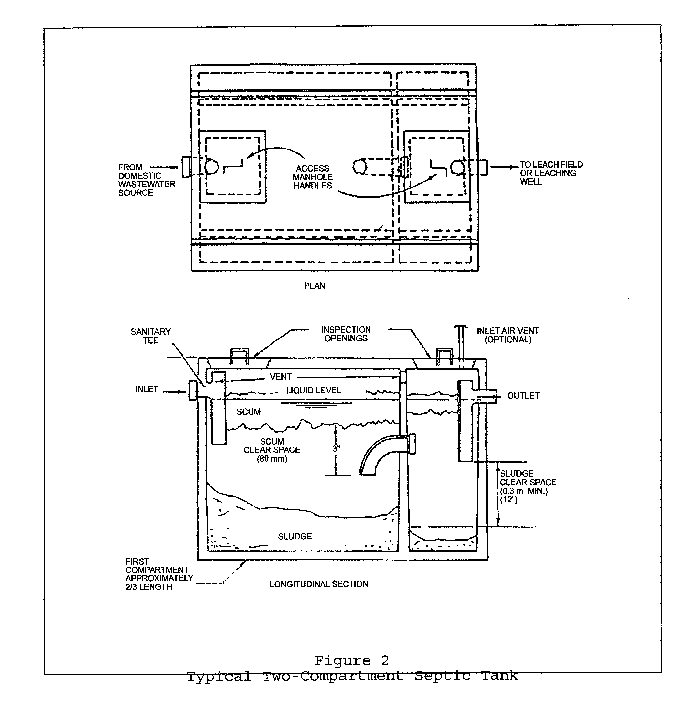 CONSTRUCTION KNOWLEDGE >>
SITE WORK >>
CONSTRUCTION KNOWLEDGE >>
SITE WORK >>
UTILITIES & PIPING
1. Why It Never Pays to Surprise the Utility
Company?
2. What Should I Know about Stormwater Piping?
3.
What Should I Know about Sanitary Sewer Piping?
4. What Should I Know about Water Piping?
5. What Should I Know about Electric, Gas and Communications?
6. What Public Domain Documents are Available for Further Study?
7. Tricks of the Trade & Rules of Thumb for
Utilities and Piping:
Why It Never Pays to Surprise the Utility Company?
It is extremely helpful at the beginning of a project for the superintendent to contact all the utility companies that will have any involvement in the project. The superintendent should determine who is the utility contact person and what series of events the utility expects. It never pays to surprise a utility company.
If the utility contact person will visit the jobsite, they can
bring the technical information and standards of the utility.
A plan can then be established and agreed upon for the start,
duration, and completion of utility related work. The plan should
include as much information as is known about who will do the work
and what work will be cone. Make sure to put this plan in writing
and send a copy to the utility contact person. A written agreement
here means much more then a verbal agreement; it is simply more
likely to be effective.
The beginning of a project is a very busy time and the utility
people don't have to be contacted the first day. However
there is a distinct advantage in having them involved early in a
project. Organizations don't get things done, people do. And
to have the utility contact person feel a responsibility, or an
"ownership" in the project will be a clear benefit.
![]()
What Should I Know about Stormwater Piping?
Most storm sewer piping flows by gravity, no pumps create pressure. The storm water drops into the system by inlets or roof drains then flows downhill. Obviously, the grade of the pipe matters. A low spot, or belly, in the pipe makes a trap, while a high spot, or hump, creates a dam. So the pipe crew needs to keep the pipe inverts (the lowest spot in the pipe where the water flows) installed in a straight line, at the slope required on the drawings.
While the storm sewer piping rarely appears on the critical path of a project schedule, it's surprising how many times the storm sewer installation becomes becomes a problem and delays the project. Some of the common issues that occur with storm sewer piping are:
- Unexpected rock excavation
- Existing pipes in the way, discovered only during the installation
- Design errors that only become apparent during the installation
Because of these type problems, the Construction Supervisor should pay special attention to the storm piping. The Construction Supervisor's goal for the pipe work should be a speedy installation that surpasses the specification requirements (i.e. leakage, line, grade, backfill, etc.). Even if the pipe work is subcontracted, it is detrimental to the project to allow unacceptable pipe work to continue. If the pipe work has to be dug-up and redone at a later date, many other trades will be adversely affected. I realize the Construction Supervisor can not be inspecting every item of work on the project. From my experience, one can predict the final quality (or acceptability) of pipe work by how the pipe foremen organizes the work. If the transit is set-up, the backhoe always digging, trenches are straight, and the pipe fitters are working methodically, the pipe work will typically be successful. On the other hand, a disorganized foreman and crew that appear to start and stop and constantly change methods are headed for trouble. I feel the Construction Supervisor should be aware how the underground pipe work progresses and should try head-off quality problems early.
It's also important to have a basic understanding of the common pipe types. Most project I see these days use High Density Polyethylene (HDPE) pipe. The are lots of variations of HDPE available, which are shown on the following site: http://www.hancor.com/product/pipe.html
Sometimes concrete pipe still comes through as the best choice, due to it's strength and durability. Some concrete pipe options are shown on the following site: http://www.shermandixie.com/products/pipe/index.php
Corrugated metal pipe (CMP) also gets used often and some CMP options are shown on the following site: http://www.contech-cpi.com/drainage/products_materials/metal/corrugated_metal_pipe/144
The degree to which storm sewer pipe must be water-tight is normally made clear in the project specifications. Sometimes, a bit of water leakage from storm sewer piping is acceptable (often a trade off for lower cost and easier installation) and other times the storm sewer piping must be water-tight under a low pressure.
I remember working as
a foreman for a Sitework Contractor building a large horse training
track. The CMP we installed under the actual track was leaking,
causing a slight settlement in the track. Since inside
connecting bands can be used to repair leaking existing CMP lines,
we were told to get those pipes water-tight. Repairs with these
inside connecting bands can only be used in large enough diameter
pipe for workers to crawl through and work in. These leaks were
about 80' in from the outlet and the pipe was 18" CMP. Since my Dad
always told me never to have someone do a job I wouldn't do myself,
two of us started to shimmy into that pipe with the inside repair
bands. I ventured about one pipe section into the pipe and
immediately started crawling back for daylight with a vengeance! I
still remember that intense, panicked feeling. The two guys I then
sent into the pipe made the repair with no problems and I learned an
exception in a leadership rule.
![]()
What Should I Know about Sanitary Sewer Piping?
Sanitary sewers require minimum exfiltration (sewage leaking out of the system and into the ground) and infiltration (groundwater leaking into the system). The main elements are pipe, manholes and clean-outs. The purpose of sanitary manholes is to allow inspection and cleaning of sewers and to remove obstruction. The minimum manhole diameter is typically four feet with 21" frame opening for access. Manholes are constructed of brick, block, poured-in-place concrete or precast concrete. Special care must be taken to limit sub-grade settlement to avoid cracking the adjacent pipes. Solid, rather than grated, covers are used on sanitary manholes to control odors. Ladder rungs must be securely anchored into the manhole walls and care taken that the steps will not pull out (fail) in several years. Failure of a manhole ladder rung is a serious, and all too common, liability and it's avoidable. Clean-outs are used on smaller pipe and allow a location to insert cleaning tools to flush the pipe.
The most common pipe used in sanitary sewer systems is PVC sewer pipe SDR-35, a typical manufacturer's website is: http://www.dpcpipe.com/pdfs/SewerPipeSpecSheet.pdf
Sometimes concrete pipe still comes through as the best choice, due to it's strength and durability. Some concrete pipe options are shown on the following site: http://www.shermandixie.com/products/pipe/index.php
Most sanitary sewer lines flow by gravity, which probably is the origin of the saying that shit flows downhill. The following US Dept of Defense guide for designing gravity sewer piping helps you understand how to size pipes for different flows and slope conditions. I apologize for the lack of clarity for the Manning Formula Nomograph Chart (the detail needs print quality not web monitor quality), but you can go to the Wastewater Collection Manual and print out a clear version.



An on-lot septic tank takes sanitary waste, allows the solids to settle to the bottom and decompose organically, keeps the scum on the top from flowing out of the tank. It yields a fluid from the outlet that has greatly reduced suspended solids and can flow into a leaching field (for further organic breakdown with soil contact) without clogging the drain field system. The figure below illustrates a typical septic tank design.

Septic Tank
What Should I Know about Water Piping?
Water piping systems use pressure (conveying water at a pressure above atmospheric) to allow the fluid to flow for long runs and uphill. Pressure systems use pumps to create that pressure. For example, a public water supply system may have a pump at elevation 100.00 that pumps to an 80 psi pressure. Assume the piping system will lose 1 psi pressure for every 3000 feet of pipe. A house that is 6000 feet from the pump and at elevation 90.00 will lose 2 psi from gravity losses and gain 5 psi from elevation change (pressure changes about 1/2 psi for every one foot of elevation change), so the water pressure at that house is 83 psi. Another house 18,000 feet from the pump at an elevation of 140.00 will lose 6 psi from friction losses and 20 psi from elevation change. The water pressure at that house will be 54 psi. This example illustrate the effect of friction losses and elevation changes on pressure piping. For some more background, go to the Basic Fluids page. Gravity piping, of course, can never have fluids run uphill.
Typical water installations from a public utility require a tap into the utility main pipe, a meter, and some type of backflow prevention. I won't go into many specifics here, since the components vary so dramatically depending on the amount of water needed and the utility's standards. In general, though, you should know that water meters can cause a significant pressure drop and that drop needs to be included in the determination that adequate water pressure will be provided.
I was working on a nursing home addition in which we were adding fire protection sprinklers. The Municipal Engineer drew plans providing us with public water. Only as the Superintendent probed, though, did we find that the water line that was shown would have almost no water pressure or volume. We couldn't even add a pump in that situation, because we would have sucked the line dry. Fortunately, the Superintendent made this discovery right before we planned to demolish an underground cistern, which we ended up using as a water storage tank to make the system work. The moral of the story is that a Construction Supervisor can add huge value to a Project by paying attention and understanding/verifying basic assumptions.
The types of pipe used for water lines varies greatly, depending on size and cost issues. For smaller installations, copper piping still gets lots of use. Although copper piping should not be used with water with a Ph less than 6.8 because the acidity of the water deteriorates the copper. Note that acidity in water is not the same measure as hardness. Even though water with a high Ph is often hard water, water with a low Ph can also be hard, since the hardness stems from calcium and magnesium levels, not the Ph level. The various sizes of copper tube (measured to the outside diameter) and copper pipe (measured to the inside diameter) are shown at http://www.sizes.com/materls/pipeCopper.htm
Some plastic pipe information is found at the following link:
http://www.plumbingstore.com/info-pipesizes.html
What Should I Know About Electric, Gas & Communications?
GAS
The primary uses of gas include heating, cooling (rarely used), and powering
engines for electric generators. Gas pressures range
from 20 psi to 50 psi in most utility distribution systems. When the gas
enters the service connection, the pressure is typically reduced by a
regulator to approximately l/4 to 1/2 psi. Since gas is a vapor it has a
tendency to rise; this fact explains how such a low pressure can be
used for distribution throughout a building. Black steel pipe,
coated to reduce corrosion, is the most
commonly used gas distribution piping inside a building.
ELECTRICAL/TELEPHONE/CABLE TV
The method of installation of underground electric, telephone, and
cable TV are often very similar. All three
utilities have utilized both of the following installation methods:
- Direct burial cable
- Underground conduit (cable pulled through later)
In either case the trench depth will be dictated by the local
utility as will the cable size and type. Direct burial cable is
usually a simple and economic installation. There are some strong
advantages, though, to underground conduit. Firstly additional cable
can be pulled at a later date by installing a spare conduit.
Secondly the conduit provides some protection from cable damage due
to accidental excavation. Thirdly, some cable has a long delivery
lead time and conduit installation allows the remainder of the
sitework to progress.
What Public Domain Documents are Available for Further Study?
The Wastewater Collection Manual provides some practical design information and details. Produced by the US Dept of Defense, the official name is UFC 3-240-04A 16 January 2004.
The Wastewater Treatment Manual some good details for understanding how on-lot septic systems operate. Produced by the US Dept of Defense, the official name is UFC 3-240-03N 16 January 2004.
The Water Supply Manual provides details about supplying water in various scenarios. Produced by the US Dept of Defense, the official name is UFC 3 230-03A 16 January 2004.
The
Water Treatment Manual provides details about treating water for
domestic use. Produced by the US Dept of Defense, the official name
is UFC 3-230-08A 16 January 2004.
Tricks of the Trade & Rules of Thumb for
Utilities and Piping:
- It never pays to surprise a Utility Company.

